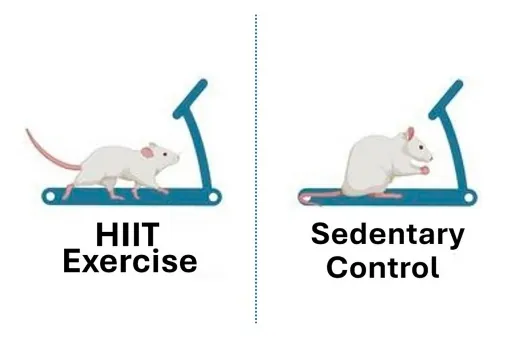
Breakthrough Study: How High-Intensity Interval Training Can Curb Cocaine Cravings
2025-09-17
Author: Wei Ling
BUFFALO, N.Y. — A groundbreaking study has unveiled how running programs can lead to successful recovery for individuals battling substance use disorders. The research suggests that high-intensity interval training (HIIT) might be the key to preventing cocaine addiction, particularly during the critical adolescent phase.
HIIT vs. Moderate Exercise: The Battle Revealed
Led by Panayotis Thanos, a neuroscientist at the University at Buffalo, this new study published in PLOS One highlights the superiority of HIIT over moderate exercise in deterring cocaine use among adolescent lab rats. Adolescence is a pivotal period where many start to encounter substance use disorders, making these findings particularly significant.
The Science Behind the Findings
Through rigorous experimentation, the researchers noted that male rats engaging in HIIT displayed a strong aversion to cocaine compared to their peers who participated in moderate exercise. Both groups were tested using a behavioral setup encouraging them to choose between a chamber with cocaine and another with saline. The results were striking: the HIIT rats preferred spending time in the saline chamber.
HIIT: A Personalized Medicine Approach
Thanos emphasized that not all exercises yield the same outcomes, advocating for a more nuanced understanding of exercise in the context of addiction treatment. "We need to view exercise as a dose-dependent therapeutic tool, similar to medication," he stated, indicating that the intensity and type of exercise play crucial roles in treatment efficacy.
The Molecular Breakthrough: A Closer Look at ΔFosB
Delving deeper, the study uncovered an increase in ΔFosB, a molecular switch linked to addiction sensitivity, in the HIIT rats. This boost in ΔFosB levels correlates with the aversion to cocaine consumption, suggesting a viable biological pathway for addiction prevention through exercise.
Future Directions: Gender Differences and Brain Metabolism
Thanos plans to further investigate how HIIT might impact brain metabolism and the potential variations in response between genders. Preliminary research indicates that females may experience heightened vulnerability to specific addiction phases, indicating a pressing need for gender-focused studies in future trials.
Collaborative Research and Support
This vital research was a team effort, including contributions from distinguished UB scholars and collaborators from Washington University and Western University. The project received backing from the SUNY Research Foundation (RIAQ0940), signaling a robust support network for this pioneering inquiry into addiction and recovery.
In summary, this study heralds an exciting new avenue in the fight against drug addiction, suggesting that engaging in high-intensity exercise could be a powerful ally in protecting against cocaine dependence, particularly during adolescence.


 Brasil (PT)
Brasil (PT)
 Canada (EN)
Canada (EN)
 Chile (ES)
Chile (ES)
 Česko (CS)
Česko (CS)
 대한민국 (KO)
대한민국 (KO)
 España (ES)
España (ES)
 France (FR)
France (FR)
 Hong Kong (EN)
Hong Kong (EN)
 Italia (IT)
Italia (IT)
 日本 (JA)
日本 (JA)
 Magyarország (HU)
Magyarország (HU)
 Norge (NO)
Norge (NO)
 Polska (PL)
Polska (PL)
 Schweiz (DE)
Schweiz (DE)
 Singapore (EN)
Singapore (EN)
 Sverige (SV)
Sverige (SV)
 Suomi (FI)
Suomi (FI)
 Türkiye (TR)
Türkiye (TR)
 الإمارات العربية المتحدة (AR)
الإمارات العربية المتحدة (AR)